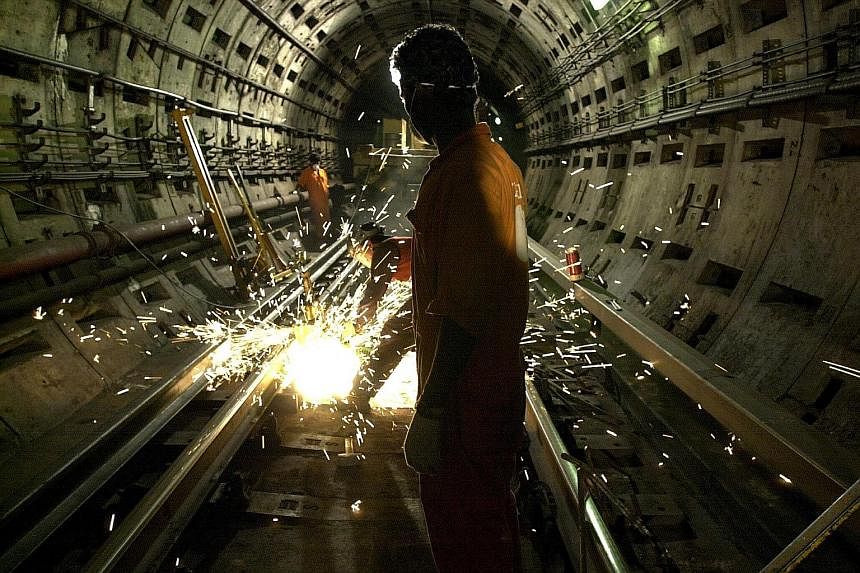Following a spate of breakdowns caused by corrosion, the Land Transport Authority (LTA) is carrying out tests to determine the level of salt in MRT tunnels.
It has called a tender for consultants who will, among other things, drill up to 10cm into the tunnel walls to analyse the salt content in the concrete.
Said an LTA spokesman: "Recent checks have not detected a high level of chloride in tunnels. But, as part of regular maintenance checks, we have called for a tender to appoint a contractor to collect water and dust samples from selected tunnels."
The samples will be sent for lab tests to measure the salt level.
"With this information, engineers can identify if there is a need to implement any targeted mitigation measures, such as anti-corrosion coating or galvanic protection," the spokesman said.
Chloride, a scientific term for various kinds of salt, is typically found in higher levels near a mineral-rich or marine environment, such as an estuary or the sea.
The LTA said inherent pores in concrete allow chloride to seep in.
Corrosion of metal parts of the rail system caused by salt contamination was identified as the cause of at least three breakdowns in the North East MRT Line.
In March 2012, such a breakdown along the Outram stretch disrupted train service for 10 hours. In August 2012, another breakdown lasted one hour. And in January 2013, yet another one lasted six hours.
The problem, apparently, is not new. Back in September 1994, when the East West Line was relatively new, corrosion triggered disruptions over four days between Tiong Bahru and Outram stations.
Investigators discovered that rainwater had dissolved salt in the soil, and this saltwater had settled around tracks and caused cracks along a 108m stretch.
Observers said that, this time, the authorities may not be just worried about corrosion of rail components - they are also concerned about the long-term effects of salt contamination on the concrete tunnels.
A Dutch study published in 1998 suggested that construction methods back then did not fully account for the effects that chloride might have on the durability of tunnels.
Associate Professor Tan Teng Hooi, head of SIM University's building and project management programme, said chloride induces corrosion of the steel reinforcement in concrete and hence is a risk. "There is a threshold level beyond which chloride will induce corrosion," he said.
"This level depends on many factors, such as the type of cement used and the pH level of the concrete surrounding the steel."
Associate Professor Susanto Teng, from Nanyang Technological University's School of Civil and Environmental Engineering, said chloride contamination can be a serious issue if a tunnel is near the sea or a body of saltwater.
"There is a very simple way to prevent corrosion or chloride penetration, and that is to replace some of the cement with slag - a by-product from iron mills," he said.
But when salt contamination has already set in, Prof Teng said further damage can be prevented by three ways: by passing an electrical current through the steel; by extracting the salt via an electrochemical method; and by electrochemically injecting a corrosion inhibitor. If damage is serious and extensive, the affected tunnel segments can be replaced with new ones.
He added: "We have developed a method to measure how long a tunnel would last under the present condition or how much additional lifespan can be expected when certain measures are taken."


